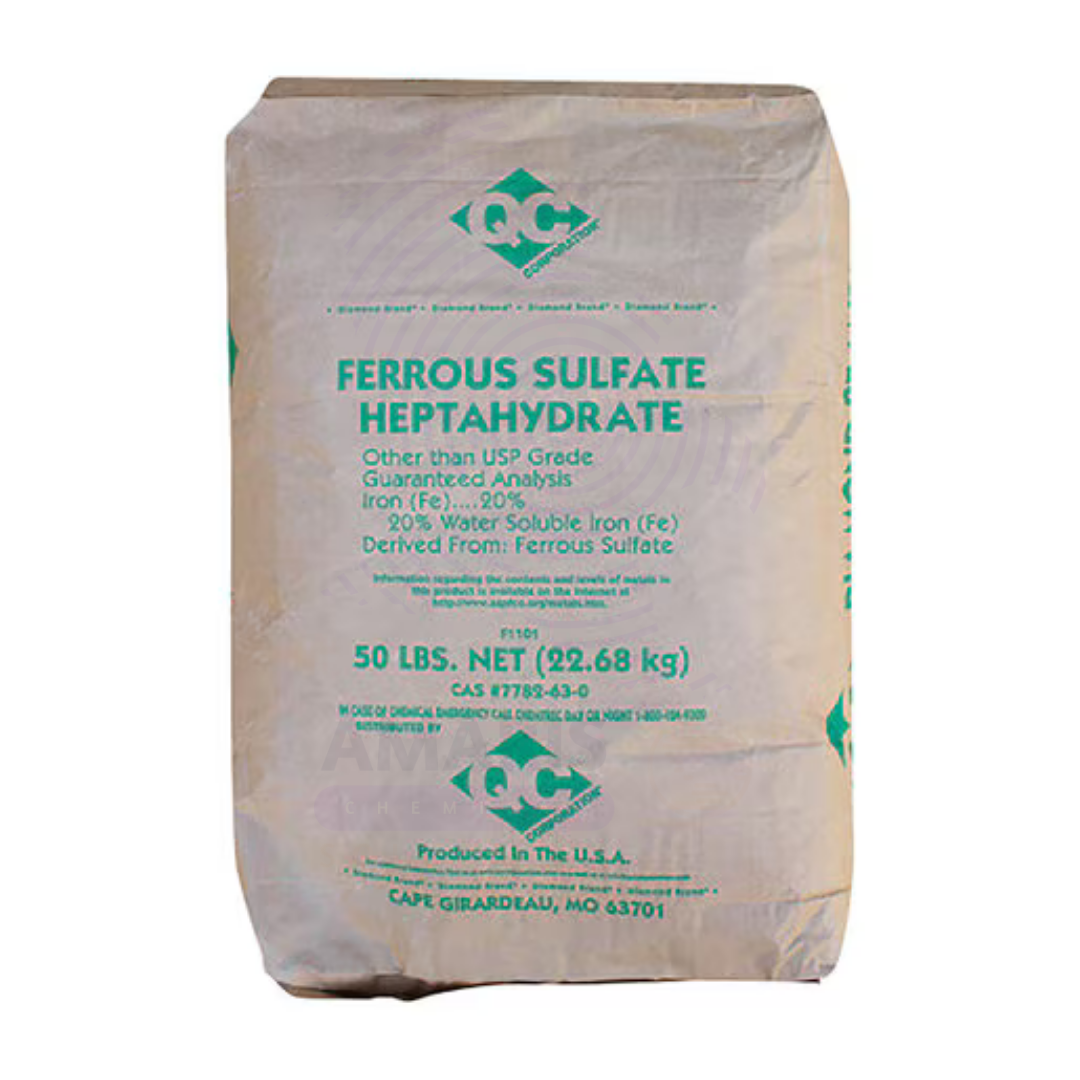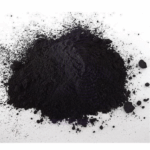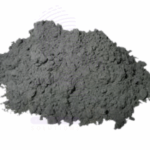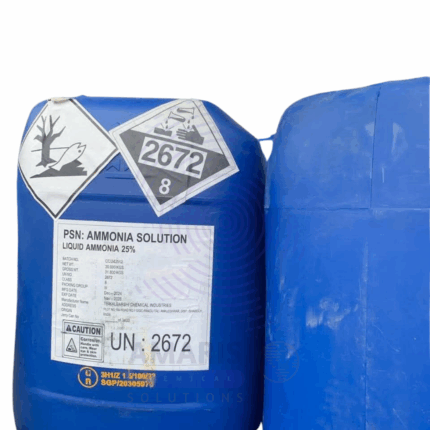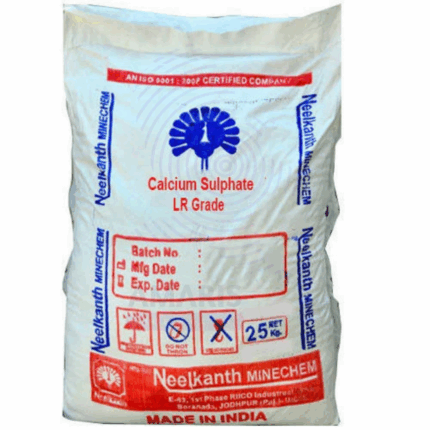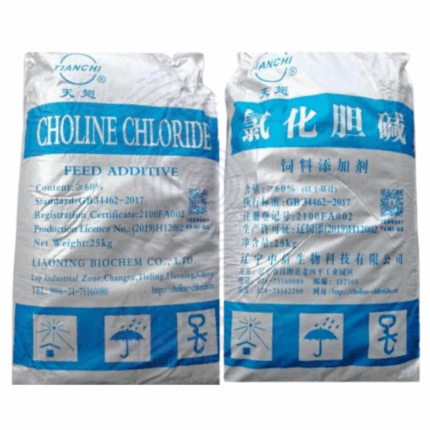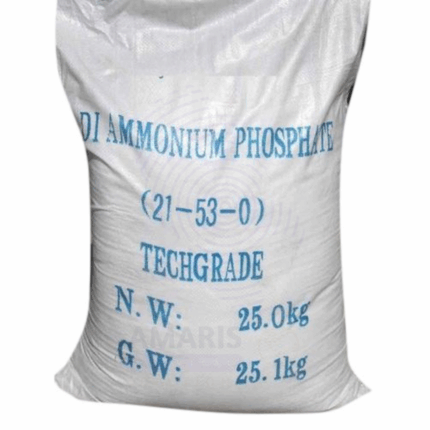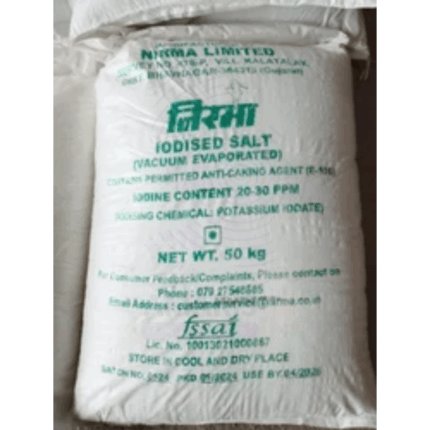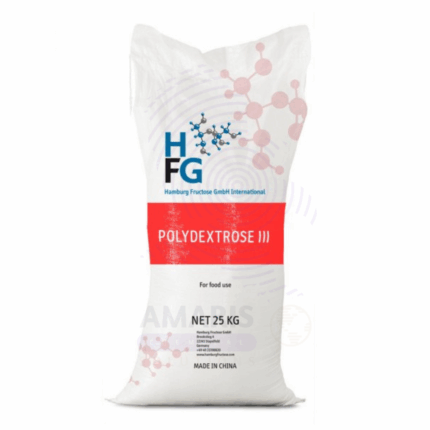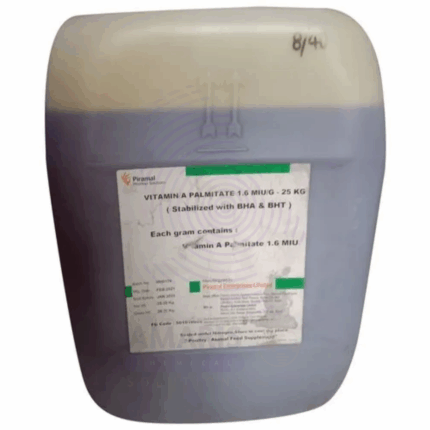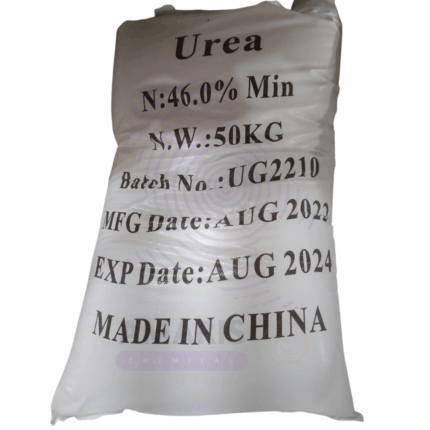Ferrous Sulphate Heptahydrate
$ 1.11 Original price was: $ 1.11.$ 1.01Current price is: $ 1.01.
Whatsapp Order
Ferrous Sulphate Heptahydrate, also known as iron(II) sulfate heptahydrate, is a pale green crystalline solid containing seven molecules of water of crystallization (FeSO₄·7H₂O). It is a widely used inorganic iron compound characterized by its high iron content (approximately 20% Fe) and good solubility in water. This hydrated salt is commonly used in agriculture, pharmaceuticals, water treatment, and various industrial processes. The heptahydrate form is preferred for many applications due to its stability, ease of handling, and cost-effectiveness.
Description
Table of Contents
Toggle
Ferrous Sulphate Heptahydrate
Primary Uses
- Agriculture and Fertilizers
- Used as an iron micronutrient in soil and foliar fertilizers to correct iron deficiency chlorosis in plants.
- Enhances plant growth, chlorophyll production, and crop yields especially in alkaline or calcareous soils.
- Employed in the preparation of iron chelates and micronutrient blends for controlled release.
- Pharmaceuticals and Nutritional Supplements
- Used as an iron source in the treatment and prevention of iron deficiency anemia.
- Formulated into oral liquid syrups, tablets, and capsules for human and veterinary use.
- Favored for its bioavailability and relatively low toxicity compared to other iron salts.
- Water and Wastewater Treatment
- Acts as a coagulant and flocculant for removal of suspended solids, phosphates, and heavy metals.
- Used for odor control and reduction of hydrogen sulfide in sewage treatment plants.
- Helps precipitate arsenic and other contaminants, improving water quality.
- Industrial Applications
- Used in the manufacture of pigments, dyes, inks, and iron-based chemicals.
- Acts as a reducing agent in various chemical syntheses and metal surface treatments.
- Used in textile dyeing and leather tanning processes.
Secondary Uses
- Food Industry
- Employed as a food additive for iron fortification in cereals, flour, and animal feed under regulated conditions.
- Used as a colorant or stabilizer in some food processing applications.
- Cosmetics and Personal Care
- Occasionally used as a pigment or iron source in cosmetic formulations.
- Laboratory and Analytical Uses
- Used as a reagent in chemical analysis for iron determination and other assays.
- Acts as a reducing agent in various laboratory procedures.
Additional information
| PACK SIZE |
50kg |
|---|
KEY PRODUCT FEATURES
1. Basic Identification Attributes
- Chemical Name (IUPAC): Iron(II) sulfate heptahydrate
- Common/Trade Name: Ferrous Sulphate Heptahydrate
- CAS Number: 7782-63-0
- HS Code: 2833.29.00
- Molecular Formula: FeSO₄·7H₂O
- Synonyms: Green vitriol, Copperas, Iron(II) sulfate 7-hydrate
2. Physical & Chemical Properties
- Physical State: Pale green crystalline solid
- Odor: Slight sulfurous odor
- Solubility: Soluble in water (~48 g/100 mL at 20°C), insoluble in alcohol
- Melting Point: Decomposes above 64°C (loss of crystallization water)
- pH (aqueous solution): Acidic, approximately 3.5 to 4.5
- Stability: Stable under dry conditions; gradually oxidizes to ferric sulfate upon exposure to air and moisture
3. Safety & Hazard Attributes
- Hazard Class (GHS): Skin and eye irritant
- Toxicity: Moderate toxicity; ingestion in high doses can cause iron poisoning
- Exposure Limits: No specific OSHA PEL; dust control recommended
- NFPA Ratings: Health – 2; Flammability – 0; Reactivity – 1
4. Storage & Handling Attributes
- Storage Conditions: Store in a cool, dry, well-ventilated area away from moisture and strong oxidizers
- Container Type: Plastic drums, bags, or bulk containers with moisture-proof lining
- Shelf Life: 1–2 years if stored properly
- Handling Precautions: Avoid dust formation and inhalation; prevent contact with skin and eyes
5. Regulatory & Compliance Attributes
- FDA Status: Approved as a food additive and nutritional supplement under regulated conditions
- REACH Registration: Registered for industrial and pharmaceutical use in EU
- Usage Restrictions: Maximum allowable concentrations regulated for food and pharma use
6. Environmental & Health Impact
- Biodegradability: Inorganic compound; not biodegradable but environmentally stable
- Ecotoxicity: Low to moderate toxicity to aquatic organisms; avoid release to water bodies
- Bioaccumulation: Not expected to bioaccumulate significantly
- Carcinogenicity/Mutagenicity: Not classified as carcinogenic or mutagenic
SAFETY HANDLING PRECAUTIONS
Safety Handling Precautions
- Personal Protective Equipment (PPE):
- Protective gloves (nitrile or latex)
- Safety goggles or face shield
- Dust mask or respirator in dusty environments
- Protective clothing or lab coat
- Handling Guidelines:
- Use in well-ventilated areas or under local exhaust ventilation
- Avoid inhalation of dust and prolonged skin contact
- Prevent dust accumulation and spills
- Storage Measures:
- Keep containers tightly sealed and dry
- Store away from moisture, acids, and strong oxidizers
- Protect from heat and direct sunlight
- Hygiene Practices:
- Wash hands thoroughly after handling
- Avoid eating, drinking, or smoking during handling
- Clean work surfaces and equipment regularly
First Aid Measures
- Inhalation:
- Move to fresh air immediately
- Seek medical attention if respiratory irritation or distress occurs
- Skin Contact:
- Wash thoroughly with soap and water
- Remove contaminated clothing
- Seek medical advice if irritation develops
- Eye Contact:
- Rinse eyes with plenty of water for at least 15 minutes
- Seek medical attention if irritation persists
- Ingestion:
- Rinse mouth with water
- Do not induce vomiting unless instructed by medical personnel
- Seek immediate medical attention in case of large ingestion
Firefighting Measures
- Fire Hazards:
- Non-flammable, but may release sulfur oxides and iron oxides upon decomposition at high temperatures
- Extinguishing Media:
- Use water spray, foam, dry chemical, or carbon dioxide (CO₂)
- Special Precautions:
- Firefighters should wear protective clothing and self-contained breathing apparatus if exposed to fumes
- Decomposition Products:
- Sulfur oxides (SOx), iron oxides, and other toxic gases under fire conditions
- Sulfur oxides (SOx), iron oxides, and other toxic gases under fire conditions
Related products
Ammonia solution
Ammonia solutions, often referred to as aqueous ammonia or ammonium hydroxide, are clear, colorless liquids consisting of ammonia gas dissolved in water. The concentration of ammonia in these solutions typically ranges from 5% to 35% by weight. Ammonia solutions possess a pungent odor characteristic of ammonia gas and are alkaline with a pH typically between 11 and 12.5. This solution is widely used across various industries due to its excellent cleaning properties, reactivity, and role as a nitrogen source.
Calcium Sulphate
Calcium Sulphate is an inorganic compound composed of calcium, sulfur, and oxygen, commonly found in two forms: dihydrate (gypsum, CaSO4·2H2O) and anhydrous (CaSO4). It appears as a white or off-white crystalline powder or granules with low solubility in water. Calcium Sulphate is widely used in construction, agriculture, pharmaceuticals, food industry, and various industrial applications. It acts as a filler, hardening agent, and drying agent due to its physical and chemical properties. The dihydrate form (gypsum) is notable for use in plaster and cement, while the anhydrous form is often used as a drying agent and in refractory materials.
Choline Chloride Powder
Choline Chloride Powder is a white to off-white crystalline powder containing 60% choline chloride, a quaternary ammonium salt essential as a nutrient in animal and poultry feed. It serves as a vital source of choline, an important component in fat metabolism, liver function, and cell membrane integrity. Produced through chemical synthesis, this powder form is highly soluble in water, making it easy to incorporate into feed premixes and supplements. Choline chloride is widely used in the agriculture industry to prevent choline deficiency, enhance growth performance, and improve overall health in livestock. Beyond animal nutrition, it finds applications in chemical manufacturing and pharmaceuticals.
Diammonium Phosphate
Diammonium Phosphate (DAP) is a highly water-soluble, white crystalline fertilizer containing nitrogen and phosphorus. It is one of the most widely used phosphate fertilizers globally, providing a balanced source of nutrients essential for plant growth. DAP supplies ammonium nitrogen (NH₄⁺) and phosphate (PO₄³⁻), which promote vigorous root development, improve soil fertility, and enhance crop yield and quality. Besides agriculture, DAP serves important roles in food additives, fire retardants, and industrial applications. It’s favored for its high nutrient content, ease of application, and compatibility with other fertilizers and soil amendments.
Iodised Salt
Iodised Salt is table salt (sodium chloride) fortified with a small, controlled amount of iodine, typically in the form of potassium iodate or potassium iodide. It appears as fine white crystalline granules, odorless, and with a characteristic salty taste. The addition of iodine helps prevent iodine deficiency disorders (IDD) such as goiter, mental impairment, and developmental abnormalities. Iodised Salt is widely used in households, food processing, and animal nutrition to ensure adequate dietary iodine intake.
Polydextrose
Polydextrose is a synthetic, highly branched polymer of glucose used primarily as a soluble dietary fiber, bulking agent, and low-calorie sweetener. It is produced through the polycondensation of dextrose with sorbitol and citric acid. Polydextrose offers numerous health and functional benefits, such as improving texture, replacing sugar or fat, and supporting digestive health. It is extensively used in food, beverages, pharmaceuticals, and nutraceuticals for its fiber enrichment properties and technological versatility.
Powdered Vitamin A Palmitate
Powdered Vitamin A Palmitate is a stable, fat-soluble ester of vitamin A widely used as a dietary supplement and food fortification ingredient. It is an essential nutrient important for vision, immune function, skin health, and cellular growth. The powdered form offers ease of handling and incorporation into various food, pharmaceutical, and cosmetic products due to its stability and bioavailability.
Urea
Urea is a highly water-soluble organic compound widely used as a nitrogen-release fertilizer in agriculture. It serves as a key source of nitrogen for plant growth and development. Apart from agriculture, urea is utilized in various industrial applications such as resin production, animal feed, and chemical manufacturing. Its high nitrogen content and easy handling make it a versatile and essential raw material in multiple sectors.


 Preservatives(food)
Preservatives(food) Flavor Enhancers
Flavor Enhancers Acidulants
Acidulants Sweeteners
Sweeteners Antioxidants
Antioxidants Colorants(food)
Colorants(food) Nutraceutical Ingredients (food)
Nutraceutical Ingredients (food) Nutrient Supplements
Nutrient Supplements Emulsifiers
Emulsifiers
 Collectors
Collectors Dust Suppressants
Dust Suppressants Explosives and Blasting Agents
Explosives and Blasting Agents Flocculants and Coagulants
Flocculants and Coagulants Frothers
Frothers Leaching Agents
Leaching Agents pH Modifiers
pH Modifiers Precious Metal Extraction Agents
Precious Metal Extraction Agents
 Antioxidants(plastic)
Antioxidants(plastic) Colorants (Pigments, Dyes)
Colorants (Pigments, Dyes) Fillers and Reinforcements
Fillers and Reinforcements Flame Retardants
Flame Retardants Monomers
Monomers Plasticizers
Plasticizers Polymerization Initiators
Polymerization Initiators Stabilizers (UV, Heat)
Stabilizers (UV, Heat)
 Antifoaming Agents
Antifoaming Agents Chelating Agents
Chelating Agents Coagulants and Flocculants
Coagulants and Flocculants Corrosion Inhibitors
Corrosion Inhibitors Disinfectants and Biocides
Disinfectants and Biocides Oxidizing Agents
Oxidizing Agents pH Adjusters
pH Adjusters Scale Inhibitors( water)
Scale Inhibitors( water)
 Antioxidants(cosmetic)
Antioxidants(cosmetic) Emollients
Emollients Fragrances and Essential Oils
Fragrances and Essential Oils Humectants
Humectants Preservatives
Preservatives Surfactants(cosmetic)
Surfactants(cosmetic) Thickeners
Thickeners UV Filters
UV Filters
 Fertilizers
Fertilizers Soil Conditioners
Soil Conditioners Plant Growth Regulators
Plant Growth Regulators Animal Feed Additives
Animal Feed Additives Biostimulants
Biostimulants Pesticides (Herbicides, Insecticides, Fungicides)
Pesticides (Herbicides, Insecticides, Fungicides)
 Active Pharmaceutical Ingredients (APIs)
Active Pharmaceutical Ingredients (APIs) Excipients
Excipients Solvents(pharmaceutical)
Solvents(pharmaceutical) Antibiotics
Antibiotics Antiseptics and Disinfectants
Antiseptics and Disinfectants Vaccine Adjuvants
Vaccine Adjuvants Nutraceutical Ingredients (pharmaceutical)
Nutraceutical Ingredients (pharmaceutical) Analgesics & Antipyretics
Analgesics & Antipyretics
 Analytical Reagents
Analytical Reagents Solvents(lab)
Solvents(lab) Chromatography Chemicals
Chromatography Chemicals Spectroscopy Reagents
Spectroscopy Reagents microbiology-and-cell-culture-reagents
microbiology-and-cell-culture-reagents Molecular Biology Reagents
Molecular Biology Reagents Biochemical Reagents
Biochemical Reagents Inorganic and Organic Standards
Inorganic and Organic Standards Laboratory Safety Chemicals
Laboratory Safety Chemicals Specialty Laboratory Chemicals(Special Laboratory Equipment)
Specialty Laboratory Chemicals(Special Laboratory Equipment)
 Demulsifiers
Demulsifiers Hydraulic Fracturing Fluids
Hydraulic Fracturing Fluids Scale Inhibitors(oil)
Scale Inhibitors(oil) Surfactants(oil)
Surfactants(oil) Drilling Fluids
Drilling Fluids
 Dyes and Pigments
Dyes and Pigments Bleaching Agents
Bleaching Agents Softening Agents
Softening Agents Finishing Agents
Finishing Agents Antistatic Agents
Antistatic Agents
 Admixtures
Admixtures Waterproofing Agents
Waterproofing Agents Sealants and Adhesives
Sealants and Adhesives Curing Compounds
Curing Compounds Concrete Repair Chemicals
Concrete Repair Chemicals Anti-Corrosion Coatings
Anti-Corrosion Coatings
 Surfactants(cleaning)
Surfactants(cleaning) Builders
Builders Enzymes
Enzymes Solvents (Cleaning)
Solvents (Cleaning) Fragrances
Fragrances
 Electronic Chemicals
Electronic Chemicals Catalysts
Catalysts Lubricants
Lubricants Photographic Chemicals
Photographic Chemicals Refrigerants
Refrigerants Automotive chemicals
Automotive chemicals Pyrotechnic Chemicals
Pyrotechnic Chemicals
 Biodegradable Surfactants
Biodegradable Surfactants Bio-based Solvents
Bio-based Solvents Renewable Polymers
Renewable Polymers Carbon Capture Chemicals
Carbon Capture Chemicals Wastewater Treatment Chemicals
Wastewater Treatment Chemicals
 Pigments
Pigments Solvents(paint)
Solvents(paint) Specialty Coatings
Specialty Coatings Binders/Resins
Binders/Resins Additives
Additives Driers
Driers Anti-Corrosion Agents
Anti-Corrosion Agents Functional Coatings
Functional Coatings Application-Specific Coatings
Application-Specific Coatings
 Fresh Herbs
Fresh Herbs Ground Spices
Ground Spices Whole Spices
Whole Spices Spice Blends
Spice Blends Dried Herbs
Dried Herbs
 Leavening Agents
Leavening Agents Dough Conditioners
Dough Conditioners Flour Treatments
Flour Treatments Fat Replacers
Fat Replacers Decoratives
Decoratives Preservatives(baking)
Preservatives(baking)
 Plasticizers & Softeners
Plasticizers & Softeners Reinforcing Agents
Reinforcing Agents Adhesion Promoters
Adhesion Promoters Vulcanizing Agents
Vulcanizing Agents Antidegradants
Antidegradants Blowing Agents
Blowing Agents Fillers & Extenders
Fillers & Extenders Accelerators & Retarders
Accelerators & Retarders